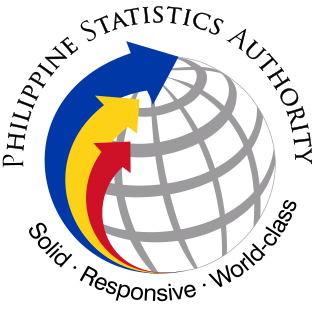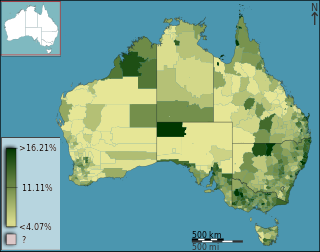Related Research Articles

The United States Department of Health and Human Services (HHS) is a cabinet-level executive branch department of the U.S. federal government created to protect the health of the U.S. people and providing essential human services. Its motto is "Improving the health, safety, and well-being of America". Before the separate federal Department of Education was created in 1979, it was called the Department of Health, Education, and Welfare (HEW).

The Australian Criminal Intelligence Commission (ACIC) is a law enforcement agency established by the Australian federal government on 1 July 2016, following the merger of the Australian Crime Commission (ACC) and CrimTrac. It has specialist investigative capabilities and delivers and maintains national information sharing systems. ACIC is part of the National Intelligence Community.

The Philippine Statistics Authority is the central statistical authority of the Philippine government that collects, compiles, analyzes, and publishes statistical information on economic, social, demographic, political affairs, and general affairs of the people of the Philippines, as well as enforcing the civil registration functions in the country.
A patient safety organization (PSO) is a group, institution, or association that improves medical care by reducing medical errors. Common functions of patient safety organizations are data collection, analysis, reporting, education, funding, and advocacy. A PSO differs from a Federally designed Patient Safety Organization (PSO), which provides health care providers in the U.S. privilege and confidentiality protections for efforts to improve patient safety and the quality of patient care delivery

Health care in Australia operates under a shared public-private model underpinned by the Medicare system, the national single-payer funding model. State and territory governments operate public health facilities where eligible patients receive care free of charge. Primary health services, such as GP clinics, are privately owned in most situations, but attract Medicare rebates. Australian citizens, permanent residents, and some visitors and visa holders are eligible for health services under the Medicare system. Individuals are encouraged through tax surcharges to purchase health insurance to cover services offered in the private sector, and further fund health care.
Australia is a high income country, and this is reflected in the good status of health of the population overall. In 2011, Australia ranked 2nd on the United Nations Development Programme's Human Development Index, indicating the level of development of a country. Despite the overall good status of health, the disparities occurring in the Australian healthcare system are a problem. The poor and those living in remote areas as well as indigenous people are, in general, less healthy than others in the population, and programs have been implemented to decrease this gap. These include increased outreach to the indigenous communities and government subsidies to provide services for people in remote or rural areas.

The Ministry of Statistics and Programme Implementation (MoSPI) is a ministry of the Government of the Republic of India concerned with coverage and quality aspects of statistics released. The surveys conducted by the Ministry are based on scientific sampling methods.
METeOR, Australia’s repository for national metadata standards for health, housing and community services statistics and information. METeOR is a Metadata registry based on the 2003 version of the ISO/IEC 11179 Information technology - Metadata registries standard. The development of METeOR was commissioned by the Australian Institute of Health and Welfare to store, manage and disseminate metadata in the Australian health, community services and housing assistance sectors. Development of METeOR was performed by Aggmedia and Synop, and based on the open-source Sytadel CMS.
In Australia, domestic violence (DV) is defined by the Family Law Act 1975. Each state and territory also has its own legislation, some of which broadens the scope of that definition, and terminology varies. It has been identified as a major health and welfare issue. Family violence occurs across all ages and demographic groups, but mostly affects women and children, and at particular risk are three groups: Indigenous, young and pregnant women.
Adoption in Australia deals with the adoption process in the various parts of Australia, whereby a person assumes or acquires the permanent, legal status of parenthood in relation to a child under the age of 18 in place of the child's birth or biological parents. Australia classifies adoptions as local adoptions, and intercountry adoptions. Known child adoptions are a form of local adoptions.

Cannabis is a plant used in Australia for recreational, medicinal and industrial purposes. In 2022–23, 41% of Australians over the age of fourteen years had used cannabis in their lifetime and 11.5% had used cannabis in the last 12 months.
Indigenous Australians are both convicted of crimes and imprisoned at a disproportionately higher rate in Australia, as well as being over-represented as victims of crime. As of September 2019, Aboriginal and Torres Strait Islander prisoners represented 28% of the total adult prisoner population, while accounting for 2% of the general adult population. Various explanations have been given for this over-representation, both historical and more recent. Federal and state governments and Indigenous groups have responded with various analyses, programs and measures.

Indigenous health in Australia examines health and wellbeing indicators of Indigenous Australians compared with the rest of the population. Statistics indicate that Aboriginal Australians and Torres Strait Islanders are much less healthy than other Australians. Various government strategies have been put into place to try to remediate the problem; there has been some improvement in several areas, but statistics between Indigenous Australians and the rest of the Australian population still show unacceptable levels of difference.
Rural health care in Australia involves the delivery of health services by private, community and public hospitals in areas classified as rural and remote. Researchers note that the health of those living in rural areas is quantitatively and qualitatively different to those living in major metropolitan areas. These differences include often significant gaps in service delivery, accessibility and lower health outcomes.

Cardiovascular disease, including heart disease, is a major cause of death in Australia. Heart disease is an overall term used for any type of Cardiovascular disease that affects the heart reducing blood supply to the heart. It is also often referred as Cardiac disease and Coronary heart disease. It is generally a lifelong condition where damage to the artery and blood vessel cannot be cured.

The Aristotle Metadata Registry is commercial Metadata Registry software based on the ISO/IEC 11179 standard for Metadata Registries. It is influenced by the AIHW METeOR Metadata Registry and the Canadian Institute of Health Information Indicator Bank. Aristotle-MDR is designed to describe data holdings databases and associated structural metadata. The Aristotle Metadata Registry was publicly launched at the 2015 IASSIST Conference in Toronto. In 2016, the founders of the Aristotle Metadata Registry were hired by Data61 to continue development of the platform.
The Five Safes is a framework for helping make decisions about making effective use of data which is confidential or sensitive. It is mainly used to describe or design research access to statistical data held by government and health agencies, and by data archives such as the UK Data Service.
The National Coronial Information System (NCIS) is a national database of coronial information on every death reported by a Coroner in Australia from July 2000 (Queensland from July 2001) and New Zealand from July 2007. It assists coroners, their staff, public sector agencies, researchers and other agencies in obtaining coronial data to inform death and injury prevention activities.
The Australian Digital Health Agency is the Australian Government statutory agency responsible for My Health Record, Australia's digital prescriptions and health referral system, and other e-health programs under the national digital health strategy. The agency replaces the former National E-Health Transition Authority which ceased on 1 July 2016. The agency is led by its chief executive officer, board, and is subject to directions issued by the minister for health and aged care on the approval of all state and territory health ministers.
Smoking in Australia is restricted in enclosed public places, workplaces, in areas of public transport and near underage events, except new laws in New South Wales that ban smoking within ten metres of children's play spaces.
References
- ↑ AIHW Act 1987/(from 4 May 1992) Australian Institute of Health and Welfare, Federal Register of Legislation, Australian Government, 27 November 2018
- ↑ Our people & structure, 25 June 2024
- ↑ Australian Institute of Health and Welfare
- ↑ "Agency Resources and Planned Performance".